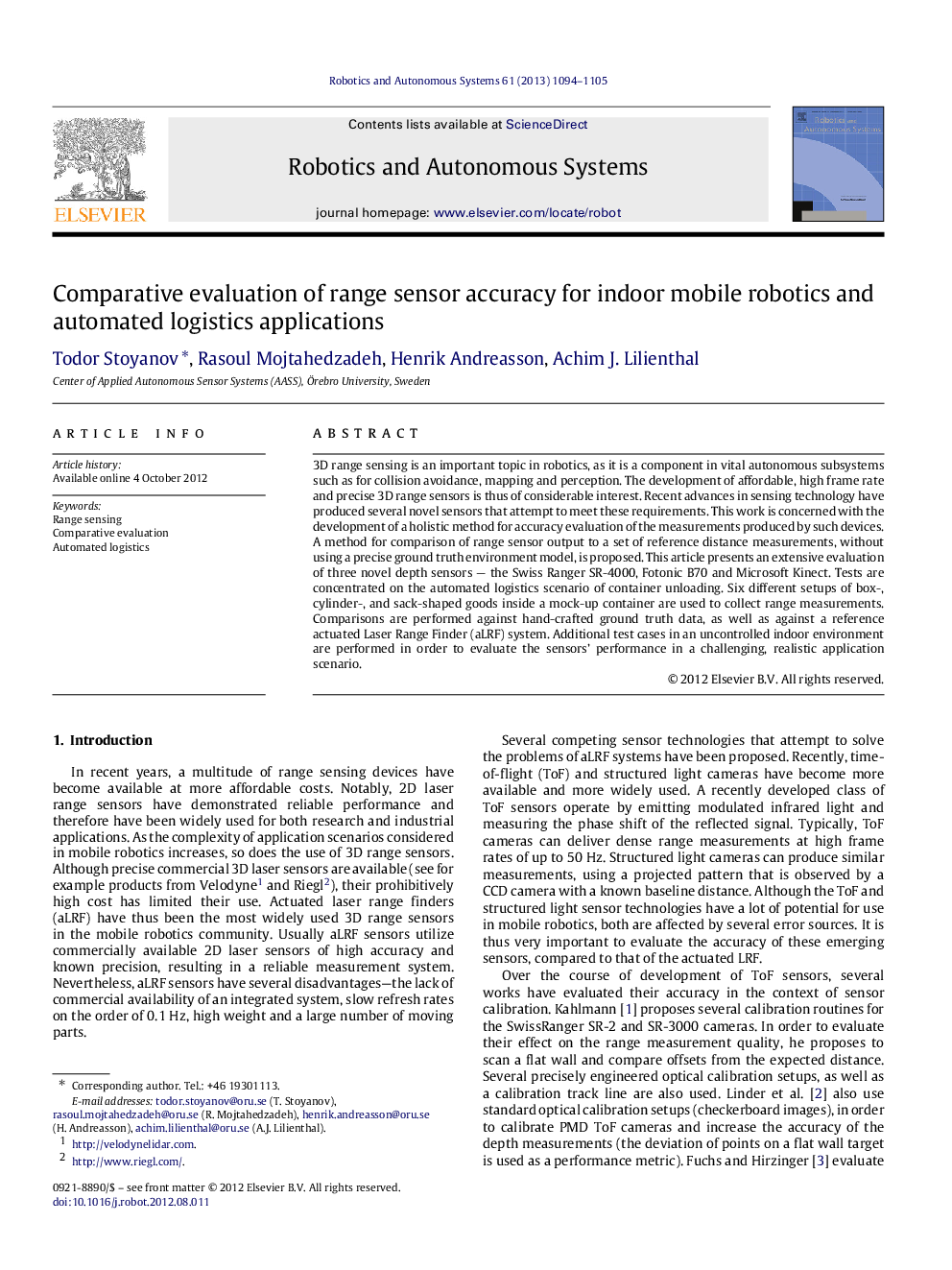| کد مقاله | کد نشریه | سال انتشار | مقاله انگلیسی | نسخه تمام متن |
|---|---|---|---|---|
| 411385 | 679552 | 2013 | 12 صفحه PDF | دانلود رایگان |

3D range sensing is an important topic in robotics, as it is a component in vital autonomous subsystems such as for collision avoidance, mapping and perception. The development of affordable, high frame rate and precise 3D range sensors is thus of considerable interest. Recent advances in sensing technology have produced several novel sensors that attempt to meet these requirements. This work is concerned with the development of a holistic method for accuracy evaluation of the measurements produced by such devices. A method for comparison of range sensor output to a set of reference distance measurements, without using a precise ground truth environment model, is proposed. This article presents an extensive evaluation of three novel depth sensors — the Swiss Ranger SR-4000, Fotonic B70 and Microsoft Kinect. Tests are concentrated on the automated logistics scenario of container unloading. Six different setups of box-, cylinder-, and sack-shaped goods inside a mock-up container are used to collect range measurements. Comparisons are performed against hand-crafted ground truth data, as well as against a reference actuated Laser Range Finder (aLRF) system. Additional test cases in an uncontrolled indoor environment are performed in order to evaluate the sensors’ performance in a challenging, realistic application scenario.
► Three novel range sensing devices are compared to an actuated laser range finder.
► A methodology, previously used for spatial reperesntation evaluation is adapted.
► The Kinect structured light camera is found to have the best accuracy at short range.
Journal: Robotics and Autonomous Systems - Volume 61, Issue 10, October 2013, Pages 1094–1105